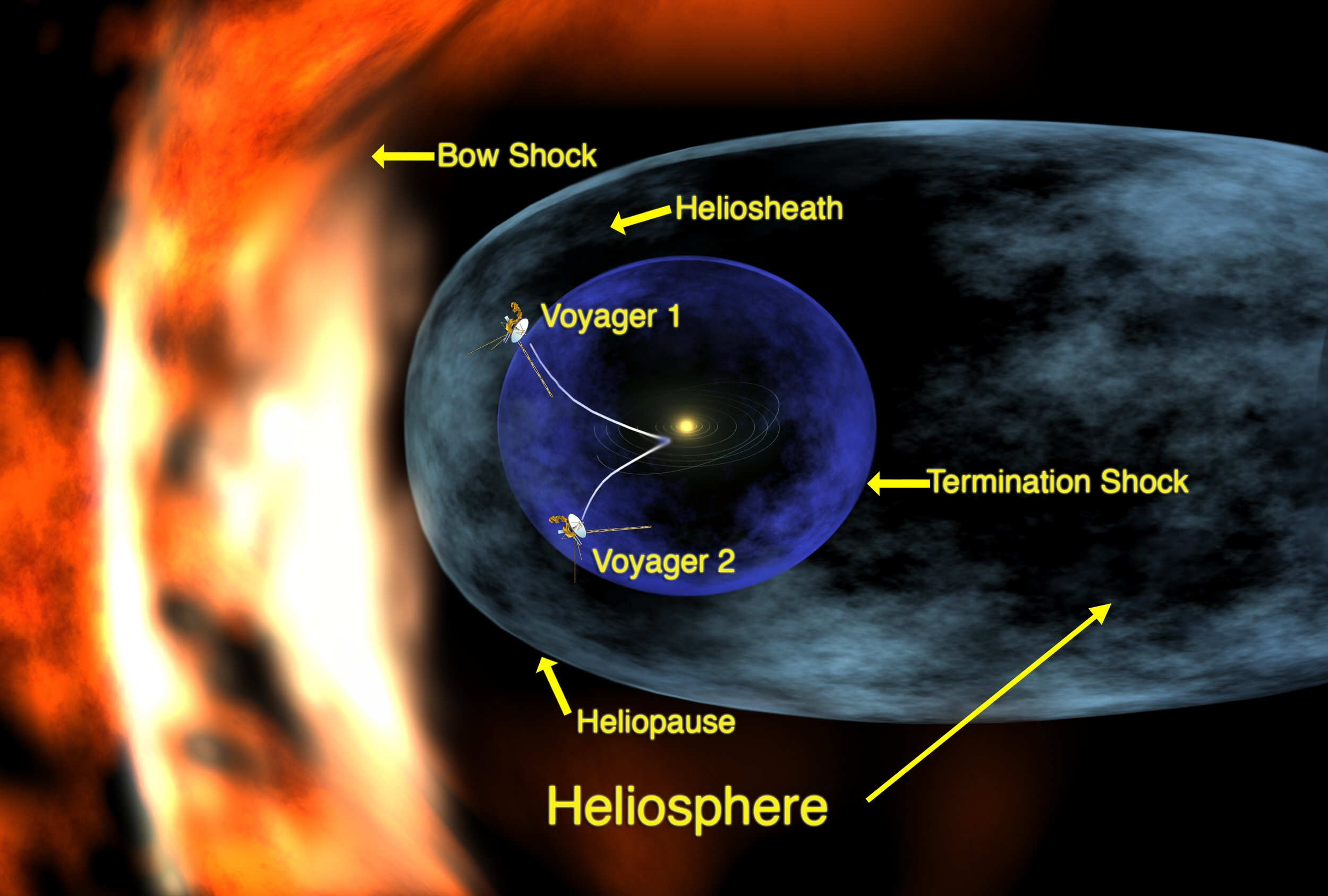Our sun isn't preceded by a bow shock. Unless you know a whole lot more about cosmology than I do, I’ll need to give some background information before I can discuss this finding. In particular, we’re going to need a crash course in heliology, and lesson one is that this is the study of the sun.
Just as the Earth and other planets orbit the sun, the sun
drags all its minions along as it in turn orbits the center of the galaxy. As
it moves, the sun ejects a continuous stream of charged particles (the
solar wind) that surrounds the sun and all the planets in a giant bubble. This
inflated bubble, known as the heliosphere, includes a spherical inner region
that encompasses the entire solar system and a much larger tear-drop shaped
outer cocoon called the heliosheath. The solar wind
travels at high speed within the inner bubble, and then slows down abruptly as it
passes through the termination shock into the heliosheath. Eventually, the solar wind dies out completely at the edge of the
heliosphere. This final boundary between the entire heliosphere and the
interstellar medium that makes up outer space is called the heliopause.
You can see a diagram of all this below.
There’s just one problem with this picture: there is no bow
shock. Which brings us to the paper authored by David McComas of the University
of Texas and his colleagues. They used the Interstellar Boundary Explorer
(IBEX) spacecraft to prove that the heliosphere is traveling through space too
slowly to produce a bow shock.
The prevailing theory of the past quarter century had been
that the heliosphere was plowing through space quickly enough to cause a bow
shock, not unlike the sonic booms caused by supersonic jets and bullwhips.
However, it seems that cosmologists have overestimated the speed of our sun. To
make matters worse, the researchers also found that the strength of the
magnetic field outside the heliosphere had been underestimated, meaning it
would have required even greater speeds to create a bow shock. Taken together,
this means that there’s little chance that our solar system is pushing a bow
shock ahead of it as it travels through space.
As McComas explains:
While bow shocks certainly exist ahead of many other stars, we're finding that our Sun's interaction doesn't reach the critical threshold to form a shock, so a wave is a more accurate depiction of what's happening ahead of our heliosphere -- much like the wave made by the bow of a boat as it glides through the water.

No comments:
Post a Comment